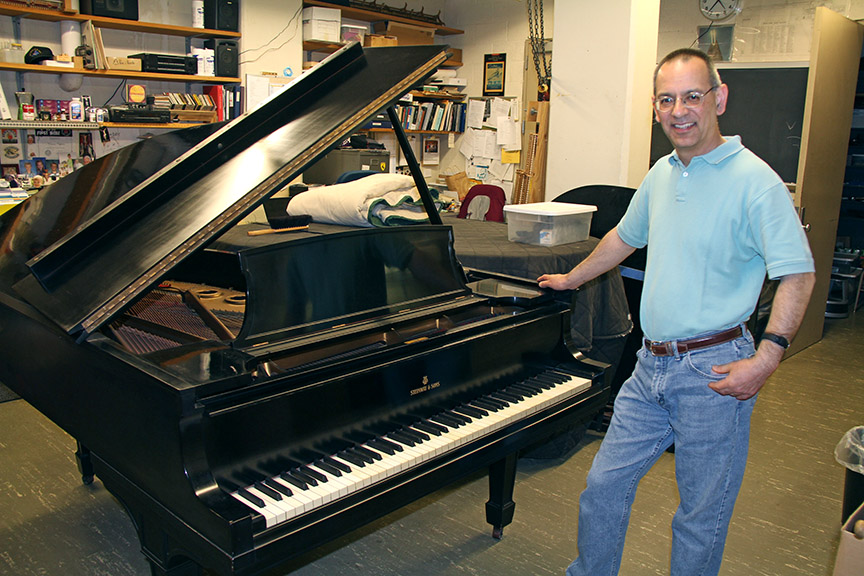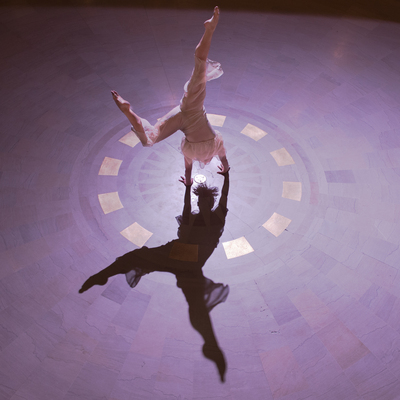Do people look most like themselves right before and right after they speak?
This was one of the many things I pondered while attending the Angie Estes poetry reading on Thursday at UMMA. Â I attended the reading as part of a requirement for a creating writing course and entered the auditorium expecting half an hour of unrelatable, esoteric verse that had nothing to do with me. Â I expected something dramatic, a poetry slam maybe? Â I expected someone over-the-top who would speak using words that were way over my head.
However, like recent experiences with opera and modern dance, I was pleasantly surprised at how connected I felt to the poet and her words that somehow managed to penetrate my recalcitrant heart. Â Before Estes took to the podium, a speaker introduced her as a poet who attempts to unravel the mystery of words and meaning. Â Estes was particularly interested in examining the fact that words by themselves have no meaning. Â She also sought to explore and examine the spaces between words, where meaning exists and they do not.
This was an excellent introduction to her verses, which rarely rhymed, but were full of alliteration and homophonic constructions that allowed my mind to flit from each of her utterances to the next. Â As she recited her poetry and moved from words that sounded a lot like each other, but created shifts in meaning, I found myself examining the processes of my mind, how I construct meaning, how I follow speakers when the speaker is not me.
Of course, throughout the entire reading, I did my best not to think. Â I did my best to relinquish logic and let my mind wander wherever it found meaning. Â As I let my thoughts wander and tried to give in the sensory experience of listening to spoken word. Â Some weird things happened. Â First, I noticed that everytime she uttered a sentence full of alliteration (and sometimes assonance as well) I breathed a sigh of relief. Â The similar sounds were definitely pleasing to me and seemed to have a calming effect as well.
Even the tone that she used throughout the reading was evenly modulated and soothing.  She rarely ended her verses in questions, which I found to be especially interesting.  There were no questions in her methods.  She seemed so sure of herself and her words.  Confidence imparts meaning, I decided.  Or at least, it plays a big role in persuasion.  Estes was not forceful or loud when she spoke, but she never wavered.  She never hesitated either.  Although I didn’t understand all of her poems, I respected her confidence and it reached me.
I also respected her fearless use of metaphor and poetic language.  Often, I find myself confining my words and my sentences to things that make sense or sound like they ought to.  I do not use verbs that do not belong with certain nouns and I rarely use metaphors, because metaphors are statements that bring a concreteness to abstract connections.  I use similes a lot.  I am comfortable with saying that “this thing is like that thing…†but I rarely use metaphors that ascribe different meanings to things.
Some lines of brilliance that remained in my mind when the reading was over…
Whether it’s memory or loss
We’re in need of most: to remember
the way home or forget
who we are when we get there
as well as…
My question was the attention
I gave to them, and their response
was their beauty
and then some singletons that I enjoyed
Is Mona Lisa’s smile a smile or a simile?
and
The sun doesn’t disappear, the earth merely turns away
and
So many stars on the ipad of night
The last line about the ‘ipad of night’ was particularly striking to me, since it referred to a simulacra of the night sky that I was able to picture immediately.  Strange how renditions and facsimiles of things can replace the thing itself at the forefront of our consciousness.
Estes offered little commentary or introductions to her poems, but she did comment on how bizarre it is that her family makes it into her poems.  I identified with this as a writer and (sometimes) poet.  You cannot help this sometimes.  Your family is the first cast of characters that you are familiar with and that you hopefully grow attached to and use in your works.  Estes also commented that one of her books of poetry was written in the same town where they filmed the James Dean and Elizabeth Taylor film Giant (which is my personal favorite of Dean’s three credited films he made while he was alive).  Before she spoke a word of these poems, I found myself in the dry dust bowl of Texas, surprised and bewildered that I had found this kind of connection in an art form that most of the general public views as a nebulous, confusing play on words that does not relate to popular culture.  To my delight, Estes mentioned Elizabeth Taylor in one of her Texas poem.
At the end of the reading, I felt that Estes had definitely taken me to a place between the spaces of language. Â She inspired me to consider the Bernini quote that people look most like themselves before and after they speak. Â After her reading, I felt that people especially look most like themselves before and after reading poetry. Â I felt that knew Angie Estes more than if she had given a political speech, a business presentation, or a scientific lecture. Â I also felt that I should set my pen to poetry this summer.









)
